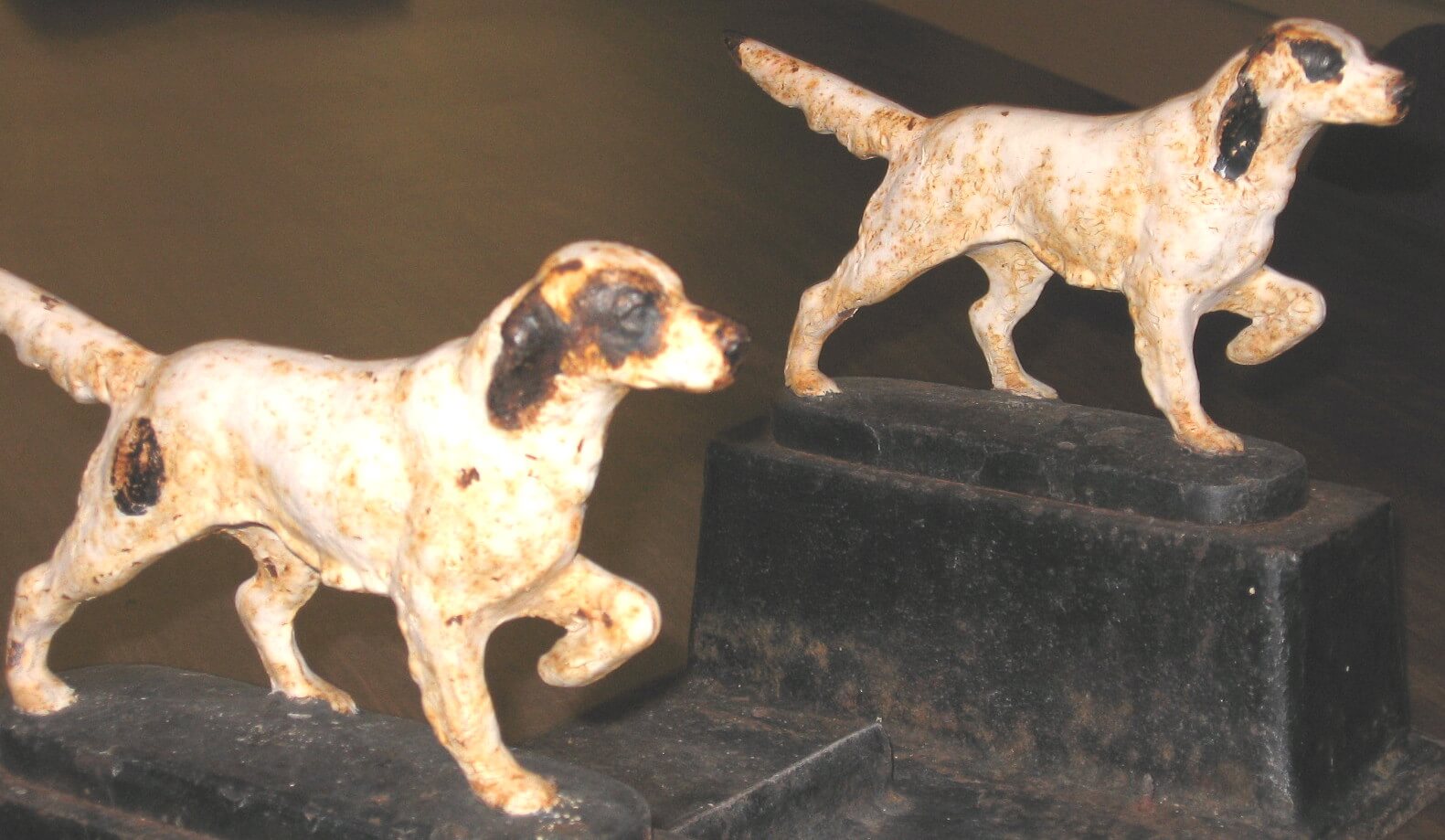Once again an item brought in for appraisal at our Tuesday evening antiques program at the Wetlands Institute has inspired some research and a column. This time it is a wonderful cast iron boot scrape featuring a pair of hunting dogs.
From the start of the Iron Age in 1000B.C. until 500A.D., all iron objects were wrought iron—softened with high heat and hammered, re-heated and hammered again. It was the Chinese who first came up with the idea of casting molten iron in molds.
The West didn’t get interested in the process until about 1400, but casting iron was still very problematic. The huge amount of fuel necessary to bring iron to a molten state and keep it there made the process very expensive and not very cost effective.
Then there were the problems transporting the molten to the mold, and creating a mold that could withstand it through repeated uses.
Many of these problems would be addressed by a pioneer in the cast iron industry, the Englishman, Abraham Darby. It was Darby’s innovations that led to the wide spread use of iron in the 1800s—in railroads, machinery, architecture and bridges.
It was the Victorians who brought cast iron into the home as furniture, decorative accessories and household items—umbrella stands, boot scrapes, door stops, door knockers, bookends, paperweights, string holders, card receivers, banks, lawn sprinkles and even toys. Many of these were made in fanciful shapes—dogs, flowers, ships, mythological figures, and other fabulous characters.
Some of these were painted, and the condition of the paint figures heavily in appraised value. The two-dog boot scrape that was brought in to me had some rust issues, so I appraised it at about $150, or half of what I thought the value would be in perfect condition.
A bit of research revealed that the piece was probably manufactured by a company named Hubley, a collector favorite. The dogs are dead ringers for those featured on a pair of Hubley bookends. A comparable Hubley boot scrape should be about $500-600 in perfect shape, so I’m re-assessing this up to one at about $300.
Old cast iron is rarely marked, often only with mold numbers. But look for such American company names as: Hubley, Bradley and Hubbard (BH), Greenblatt, Littco, Eastern Specialty, Albany, Chicago Foundry, National Foundry, and Wilton.
Appraisals: Doorstops: Kittens in a Basket (10”x7”) $350; Owl on Stump (10”x6”) $225; Rose Basket, marked “Hubley,” $145; Door Knockers Sailing Ship, orig. paint (4”x2.75”) $125; Bathing Beauty (5”x2.5”) $500; Misc.: Eagle bookends with stars & stripes (7”x5.25”) $150; Garden urn w/cherubs (38”) $650; Jockey hitching post w/glass eye $800.
There are still two more Tuesday evenings (Mar. 10 and 17) when you can have your things appraised at the Wetlands Institute on Stone Harbor Blvd. The fee is a $25 donation at the door, and you can bring in as much as you want. Call 609-368-1211 for more information.
—Arthur Schwerdt, a certified appraiser, is the author of “The Antique Story Book: Finding the Real Value of Old Things,” and co-owner of The August Farmhouse Antiques on Route 9 in Swainton. Send your comments, questions, or appraisal requests to aschwerdt@cmcherald.com.
Cape May – The number one reason I didn’t vote for Donald Trump was January 6th and I found it incredibly sad that so many Americans turned their back on what happened that day when voting. I respect that the…








